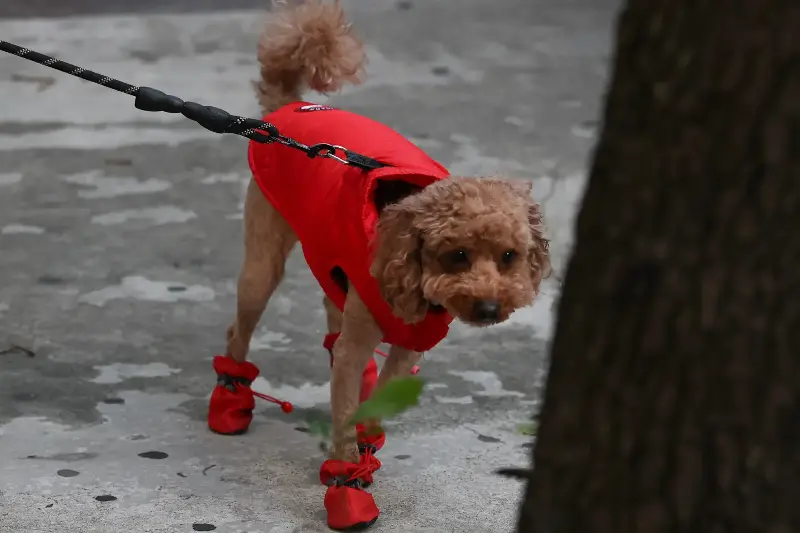
As winter sets in, many dog owners find it more difficult to know when and how to exercise their pets.
According to a study published by the National Library of Medicine (NLM), dog owners reported being 48.2 percent less likely to exercise their pets in cold weather.
However, dog owners seem to be taking extra precautions this year as online searches for “dog coats” have risen by 56 percent in the last 30 days amid plummeting temperatures.
Do Dogs Need Coats?
Helen Webb, spokesperson pet supplement brand YuMOVE, says that while some breeds are naturally equipped for wintry conditions, others are far more vulnerable.
“Dogs with short hair or a low body fat percentage may struggle with the temperature change, and a coat can provide the extra warmth they need during cold winter walks,” Webb explained. “Breeds with thicker coats or those naturally adapted to colder climates might be able to regulate their body temperature more efficiently.”
How to Tell If Your Dog Is Feeling the Cold
Webb advised that owners to rely on their dog’s behavior as the clearest indicator of whether they need extra insulation.
“Size, build and coat type will be the biggest indicators, and some dogs may feel the cold more than others,” she said. “Look for behavior signals… Shivering, seeking warmth or looking uncomfortable in chilly weather are good indicators that your dog may benefit from a coat.”
She adds that puppies and senior dogs (aged eight and above) often struggle to regulate their body temperature, making a winter coat a smart precaution.
Why Fur Isn’t Always Enough
A common misconception, Webb warned, is assuming all dogs are protected from cold simply because they have fur.
“The assumption that dogs are naturally protected from the cold because they have fur can be dangerous,” she said. Breeds with thick, layered undercoats are naturally winter-ready—but most dogs don’t fall into this category.
“Any dog with a thinner coat, without the essential insulating underlayer, will benefit from a bit of extra protection from the cold,” Webb explained.
What to Look for When Buying a Dog Coat
If you’re considering buying your dog a coat this winter, Webb also shared the three essential things to look for.
1. Coverage
“Aim for a long, practical coat that covers the neck, belly, and base of the tail—areas that lose heat quickly,” Webb said. A versatile coat that withstands wind and rain while allowing easy movement is ideal.
2. Insulation
Not all dogs need heavy padding.
“More active dogs will benefit from a coat that allows more breathability, whereas slower, smaller dogs may love the extra comfort of fleece or down-lined coats,” Webb said.
3. Ease of Use
Some dogs dislike coats purely because they’re awkward to put on.
“Consider options that easily clip or zip on and off, or a coat that pairs comfortably with your usual harness,” Webb said.
